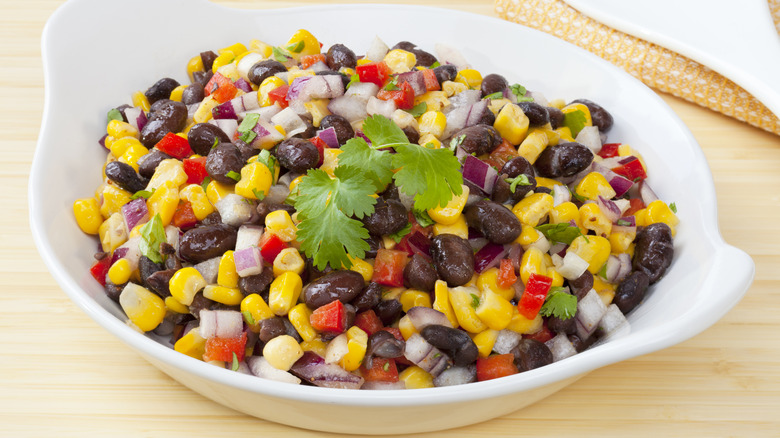The Canned Beans Ingredient Label Info You'll Want To Check For
When reaching for a can of beans at the store, one would assume there is no need to scan the label for much —perhaps something about it being organic, low-sodium, or BPA-free. The ingredients should just be cooked beans and whatever makes up that syrupy liquid — water, a small dose of salt, and (one hopes) an infinitesimal helping of some kind of preservative or stabilizer, right? But seemingly straightforward foods can come packaged with a host of added ingredients, which you'll want to check before you whip up a dish using them.
Some common listings on the label to keep an eye out for are the obvious — sugar and sodium. They both make food taste better, so they often get snuck in, especially in jazzed-up canned beans like those from the Glory Foods and Hormel brands. Both of these additions will affect the taste and amount of seasoning you'll want to use in your dish. The amounts of each are also worth noting if you're watching your intake of either. But what are some other contents you'll come across on a can of beans, and what should you keep in mind?
Added ingredients mean added flavors
An ingredient you'll often come across in canned beans is calcium chloride, which is a preservative and firming agent used to extend the beans' shelf life. It keeps the already inherently mushy food item from becoming downright baby food. The FDA has classified it as GRAS (Generally Recognized As Safe), and the amount used in a can of beans is minimal. It is also technically a salt — it's the same stuff used to de-ice roads in the winter. And while it doesn't raise the sodium levels in food (since that element is absent from the compound), it does add a salty flavor.
If you see this ingredient listed on a can of beans, you'll want to adjust the amount of salt you use accordingly. It's always best to taste as you go — you can always add more salt to a dish, but you can't take it away. The bottom line is it's always best policy to flip over the can to find out what, if any, culinary tweaks need to be made.

